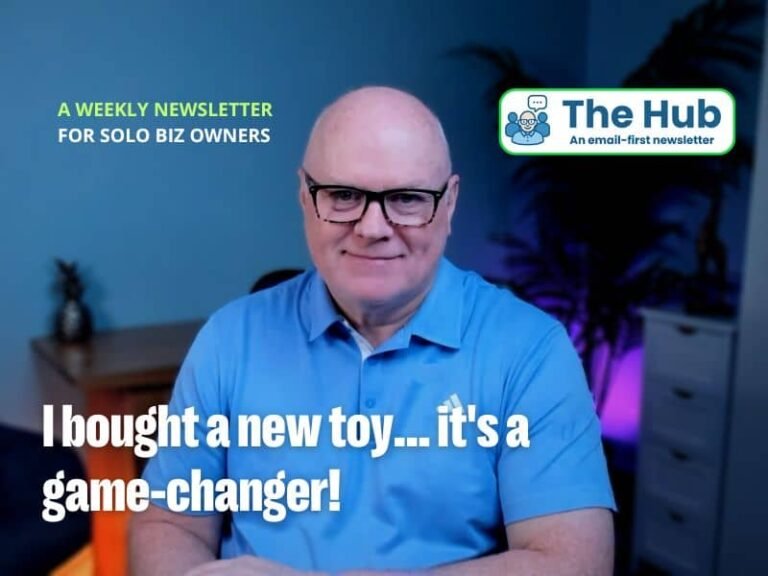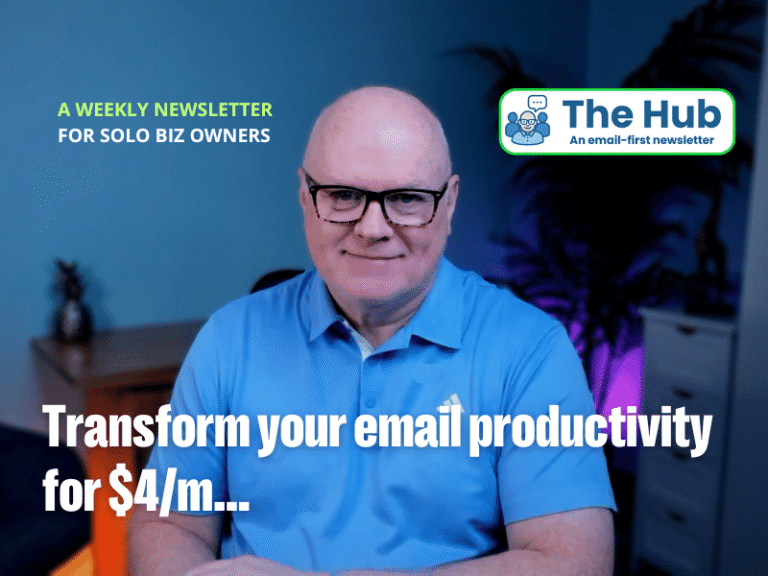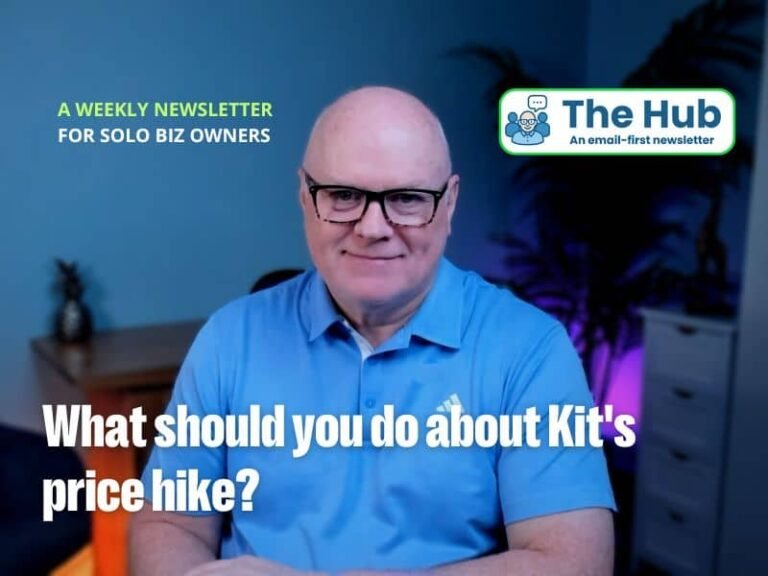|
|
The anatomy of an effective marketing email
When you’re sending emails to your list, you need to be aware of the key elements that can be the difference between engagement and tumbleweed.
What do I mean by that? Well, there are 8 key aspects to a good marketing email that, when included, increase the likelihood of your readers becoming more engaged.
Let’s look at them, one by one;
|
|
1. The Sender
As obvious as it may seem, you need to make sure that whatever your ‘sender’ name is, it’s consistent with however your known to your subscribers – this could be ‘you’, your business, or even your product/service.
Don’t send from ‘Joe Bloggs‘ if people only know you as ‘Joe from Perfect Poetry‘ – they’re unlikely to even read it if they don’t recognise the sender.
Also, your sender name should (where possible) be consistent with your actual sending email address’ for example, if your email comes from “Joe from Perfect Poetry” then ideally your sending email address should be something that contains perhaps ‘@pefectpoetry.com‘.
You should also avoid using ‘no-reply‘ email addresses (e.g. no-reply@perfectpoetry.com) – these only drive people nuts! And anyway, why wouldn’t you want your subscribers to email you?!
2. The Subject Line
It has one job, to get the recipient to open the email. That’s it! As soon as the email’s been opened, the ‘subject line’ can chill, job done!
But don’t be all spammy or clickbaity, just be authentically intriguing. The subject line of an email can be the difference between it being opened and being chucked straight in to the ‘boring‘ bin.
3. The Preview Text
Think on the preview text as the accomplice to the subject line. If it’s the job of the ‘subject line’ to get the recipient to open the email, then it’s the job of the preview text to act as the cheerleader to the subject line.
The preview text further fuels the intrigue and desire to open the email.
The image below shows one of my emails, with the sender as ‘John at Proven Flows‘, the subject line as ‘The millionaire who worked from a broom cupboard…“, and a preview text of “From a humble start, he grew and sold his business for £97 million…“.
|
Excerpt from a recent email |
4. The Salutation
When you’re writing an email, just be ‘you’. Start your email using what you’d say if you were speaking to this person.
Example: ‘Hi, John’. Don’t start with ‘Hey John!’ or ‘Yo, John!” or ‘Dear, John’ if that’s not how you’d normally talk – it’ll just feel weird.
Try to personalise it, where possible. Use the person’s first name instead of ‘Hi there’ or ‘Hi friend’ – you just know it’s a bulk email broadcast when companies (or people) don’t use your name. The use of someone’s first name will increase engagement since it’s a human trait to respond to being referred to by your name.
5. The Body
This is the section of the email that carries all the value. Make sure you say everything that you want to say in here. But also make sure that it has a semblance of structure too, taking the reader on a logical (or at least understandable) path.
Personally, I like to use the ‘intro, main, outro’ approach. This is where I’ll position what I’m about to write about (the intro), I’ll then write about it (the main), before closing this section with a summary (the outro). Remember, this is all inside the main body section of the email (and btw, you’re reading the ‘body’ of this email right now!).
I also strongly encourage you to make your email as readable as you can by using white space (breaks up the text for the reader), image and / or video to add variety (humans like variety), and the use of textual formatting for adding emphasis (e.g. bold, italic etc.).
6. The Call To Action (CTA)
You should finish every email you write with a call to action (CTA).
Now, just for clarity, by CTA I don’t mean a sales pitch! But ask the reader to do something. As humans, we are programmed to respond to requests (even if we sometimes resist), and therefore the more often you use one, the more likely your readers are to take actions.
Examples of what I mean include;
- “Hit the reply button and let me know what you think.”
- “Do you agree? Interested to know your thoughts – do let me know.”
- “Download my guide here, it’s free and walks you through the process.”
- “Anything like this ever happened to you?”
And of course, when appropriate, like during a sales campaign, you’d directly ask for the sale, “Click to Buy Now”, “Click to Join Today” etc.
7. The Sign-off (+ the P.S.)
Much like the salutation part of your email, just be ‘you’.
If you’d normally say “Cheers”, then use “Cheers”. If you’re more formal, then use more formal language. People read what you write with your voice in their head (if they’ve heard you talk), so be ‘you’ and you won’t go far wrong.
You might also want to include something that encourages your readers to forward the email to others who they believe would benefit from receiving your emails.
P.S. As an additional ‘bonus’ to your sign-off, you can use the post-script, or the ‘P.S.’. It’s proven to be a very effective tool that gets attention. People love a P.S., and in fact, I’ve had so much success with P.S.s in the past, I even include a “P.S. Extra…” section in some of my emails (like this one!) 😊
8. The Subscriber Preferences
It’s important to make it easy for people to unsubscribe from your list (it’s also law in most countries), so make it easy for them to do so.
I see some people trying to keep email subscribers on their list by obfuscating the unsubscribe link (e.g. light grey text, small font, difficult to see and easy to miss), thinking that they’ll be able to sell to them at some point. This is a recipe for disaster. If someone wants to leave your list, let them go – why on earth would you want people on your list who don’t want to be there?! It just makes no sense.
And don’t let unsubscribes affect you – they will definitely happen, so embrace them as a ‘clean-up’ exercise that they are doing for you!
You can also configure your email marketing system to offer your subscribers options of which emails to subscribe to and which to opt-out of; e.g. if you sent emails that focused on Apple’s iPhone and Samsung’s Android phones, chances are your subscribers would only interested in whichever ecosystem the live in, choosing to ignore the other.
|
|
What are you known for?
“Apple” – what does that name conjure?
How about “Aldi“?
What about “Nike“?
When we hear or see these brands, our internal manifestation of what they represent, or are best-known for, happens without any real effort.
You may love or hate “Apple”, but whichever it is, you automatically make a connection between the name and what it represents (for you).
Now, let’s flip that thought process…
I’ll ask you who first springs to mind when you think about the following;
- plumbing work
- copywriting services
- LinkedIn training
- mortgage advice
- car repair services
Did you come up with a name (person or business) for each one?
That’s where you want to be with your business; whenever someone thinks about the products or services you provide, you want them to think of you!
Become ‘known‘ for your thing.
Become recommendable for the things you can do.
Become reliable for doing or making your ‘thing’.
To achieve this, do these 3 things;
- Be consistent wherever you show up (i.e. in all your ‘places’; website, socials, events, calls etc.).
- Create and curate content that shows/reminds people about your capabilities.
- Declare your authority in your ‘space’ by helping others to overcome challenges using your products/services.
And if you want to take a deeper dive into this topic, I’d recommend this book to you (either read or listen) – it entitled “Known” and was authored by Mark Schaefer. (Amazon link)
Mark is a globally recognised keynote speaker, educator, business consultant, and author. His blog {grow} is recognised as one of the top marketing blogs in the world – and worth a follow, if that’s your thing!
|
|
A finger-licking success story… from a sexagenarian!
|
|
Born in Indiana, USA in 1890, Harland D. Sanders spent most of his career going job to job, before eventually starting a service station in Kentucky, selling fried chicken.
In 1952 (aged 62), having perfected his secret recipe, Sanders franchised his business, allowing others to open restaurants and sell his chicken.
By 1964, Sanders had established Kentucky Fried Chicken (KFC) in more than 200 locations and sold the business for $2m (about $21m in today’s value).
Sanders would go on to be an ambassador for KFC for his remaining life (until 1980); a business that today generates $28bn, with more than 26,000 locations in 149 countries.
|
Cheers, If we’re not already connected on LinkedIn, then let’s fix that now! If you’re new around here, let me give you a brief intro to who I am and what I do; 👋 Hi, I’m John, a freelancer with 30+ years of experience in software development, business start-up and growth strategies, and digital marketing, specialising in email marketing. I help service-based freelancers grow their businesses by showing them how to effectively implement an email marketing system that’ll bring them leads, prospects, and new clients, complemented with proven success strategies for solopreneur-type businesses.
|



